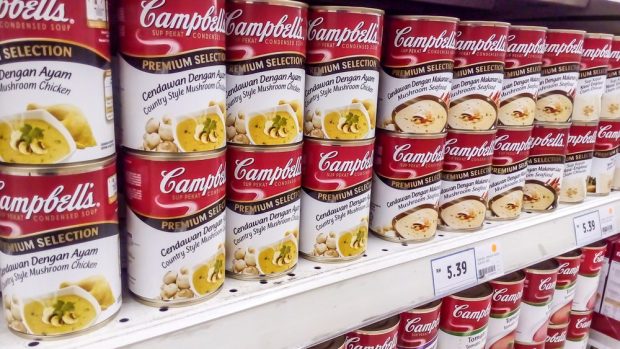Campbell’s Sees Packaged Meal Growth as Consumers Seek Restaurant Alternatives

Inflation has caused consumers to reconsider their spending, which has lifted Campbell’s prepared food sales.
This, as the food company announced Wednesday (Dec. 7) in a presentation accompanying its first quarter FY2023 earnings report that consumption of its ready-to-serve soups is up 9% year over year and 18% relative to 2019. The news comes as consumers seek more affordable alternatives to restaurant meals for the times when they do not want to cook from scratch.
“Our consumer insights show that consumers continue to cut back on out-of-home eating and are migrating for more expensive grocery categories as they seek ways to ease the impact of inflation,” Mark Clouse, CEO of Campbell Soup Company, told analysts on a call.
Indeed, research from the August edition of PYMNTS’ Consumer Inflation Sentiment study, “Consumer Inflation Sentiment: Inflation Slowly Ebbs, but Consumer Outlook Remains Gloomy,” revealed that, in response to inflation, 78% of restaurant customers are eating at home more. Consequently, food brands and grocers alike have been noticing an uptick in sales of their ready-to-eat meal options.
Get the study: Consumer Inflation Sentiment: Inflation Slowly Ebbs, but Consumer Outlook Remains Gloomy
In fact, research from PYMNTS’ August study “Digital Economy Payments: Consumers Buy Into Food Bargains,” which drew from a survey of nearly 2,700 U.S. consumers, found that 37% of consumers bought prepared food on their most recent grocery trip.
Read the report: Digital Economy Payments: Consumers Buy Into Food Bargains
Moreover, it is not only in ready-to-serve foods but also in other food-at-home categories that Campbell’s is seeing this uptick.
“Consumers are making changes to stretch their budgets, and following several years of becoming more confident and comfortable with cooking, they continue to turn to our categories and [our] brands, as evidenced by the continued growth of our meals and beverages business,” said Clouse.
He added that consumers now have “about 80%” of their meals at home, a figure for which he did not provide a citation. As an example of the strength of the brand’s products during this inflationary environment, Clouse stated that its spaghetti carbonara recipe amounts to “about $1.53 a serving.”
Certainly, shoppers are looking for value, with consumers feeling the impacts of inflation even more acutely than the measured price increases. For instance, research from the latest edition of PYMNTS’ Consumer Inflation Sentiment study, “Consumer Inflation Sentiment: In It For The Long Haul,” finds that consumers perceive the prices of fresh meat and vegetables to have risen 23%. Yet, United States Bureau of Labor Statistics (BLS) data find that these prices have only increased by 8% to 9%.
Yet even as some consumers spring for more premium grocery products as they cut back on restaurant dining, others are looking to reduce their grocery spending by switching brands. The October edition of the study revealed that 37% of grocery shoppers reported purchasing lower-quality products to reduce their expenses in the face of inflation. Clouse concedes that the company saw “competitive share losses to private label,” as consumers looked to reign in their spending.